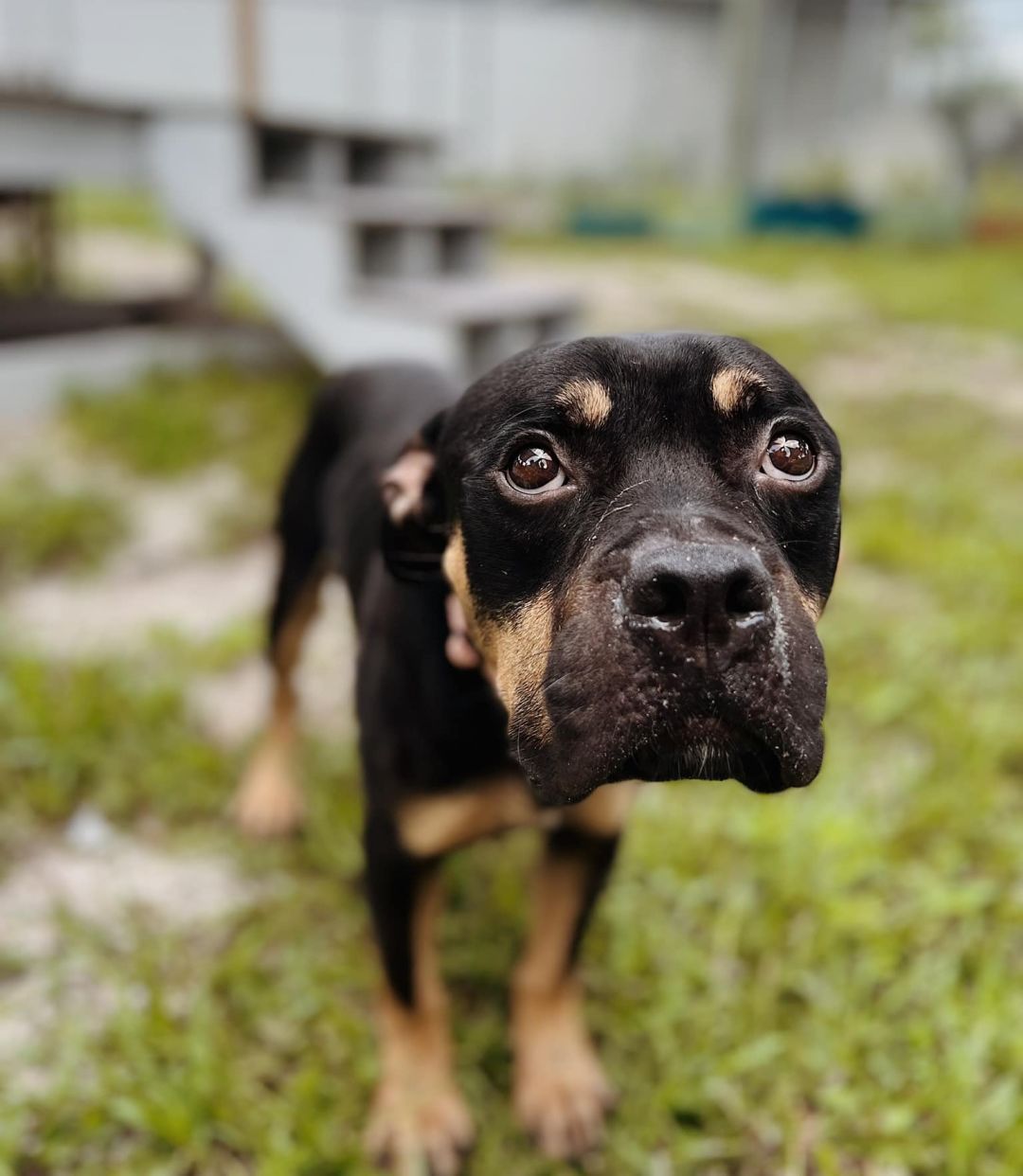How to Prepare Your Pets for a Hurricane Evacuation

Mr. Briggs was recently adopted from the Humane Society of Manatee County.
Image: Courtesy Photo
Make sure to count your fur babies in your hurricane evacuation plans—they depend on you for their safety. Pets are allowed in some, but not all, Sarasota and Manatee county shelters, with the exception of guide dogs. We caught up with Rick Yocum, executive director of the Humane Society of Manatee County, to learn how to prepare your pets in case of an emergency.
Aside from essentials like food and water, one thing Yocum highlighted that you can’t pack is understanding the importance of not using your pet as an excuse to not evacuate.
“Pet owners are afraid they'll be separated from their animals, but they have rights in a state of emergency and can’t be denied," Yocum says. "People without transportation often assume they can’t use public transportation to evacuate if they’re bringing their pets. As long as they’re restrained on a leash or in a carrier, you can. With larger dogs consider using a muzzle. In stressful situations, dogs may behave differently, plus it shows others you’re being responsible.”
On the flip side, “if you need to evacuate, you must take your pet,” he says. “Leaving pets behind is never a good idea.”
Here's What to Have at the Ready
Food and Water
Bring enough to last three to five days. Ensure nothing is expired—in other words, that pet evacuation box you stocked in 2019 and never used may need to be updated.
"After three days, people will typically have the opportunity to restock at a store, after five, even more so," Yocum says. Remember to bring a can opener if needed and don’t forget bowls.
A Picture of You and Your Pet
In the event that you’re separated, or need evidence of ownership, a picture of you and your pet may come in handy. While you're at it, make sure your pet's microchip information is up to date.
A Leash and Tagged Collar
Your pet will often need to be leashed, and a tagged collar further helps with identification.
A Pet Carrier
Keeping your pet in a carrier will make it easier to transport them and contain them at a shelter. You'll want something large enough to fit a small litter box for cats. In fact, Yocum suggests using the pet carrier itself as your animal's hurricane prep container. Once you've arrived at your destination, pet owners can empty it for their animals to use.
Waste Supplies
Cats need kitty litter and a litter box, along with a scoop and plastic bags for waste disposal. Disposable litter boxes are also an option. Bring dog waste bags.
Health Records
Bring your pet's proof of vaccinations and microchip registration information, stored in a waterproof container or Ziploc bag.
First Aid
A basic pet first aid kit may come in handy.
Anxiety Treatments
“If your animal is already being treated for anxiety you’d want to continue with that," Yocum says. "If your animal isn't, I don't recommend starting now. It only adds another unknown abut how they might respond to it."
Medications
A one-week supply is recommended, stored in an airtight, waterproof container or Ziploc bag.
Treats and Toys
Pack them if your pet is used to receiving treats or if they have favorite playthings.
What About Exotic Animals?
“The Humane Society of Manatee County doesn't deal with exotic animals, but the same tips hold true," Yocum says. "It’s the same kind of planning as though you were setting off on a trip."
Once the Storm Has Passed
Animals can go missing after storms because the winds and rain tend to wipe out the smells they use as a reference point for finding their way home.
Once you're back at home after an evacuation event, don’t let pets dart outside on their own. Yocum recommends keeping both cats and dogs on a leash when going outside for at least a week. This gets them reacquainted with the new smells that mark their home, helping them recreate that scent-led connection.
After having lived through multiple evacuations, Yocum points out that when animals are in the equation, their presence often lightens their owners' worry.
“People with pets in shelters talk and connect over their pets. It brings everyone together and can change the attitude of everyone in there. I've seen evacuation shelters without them and it's not the same. It's really amazing to see," he says.



